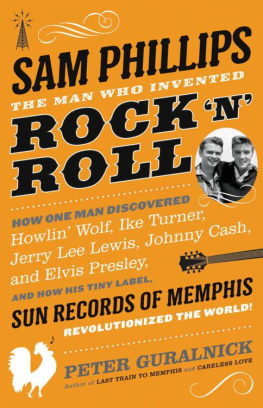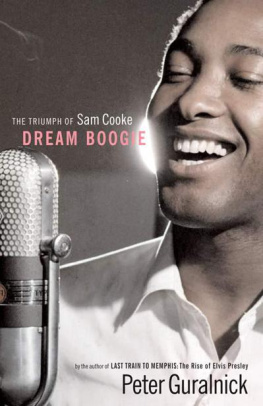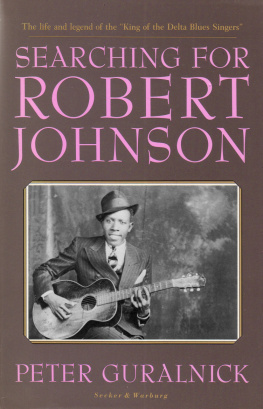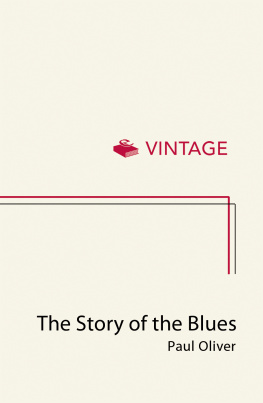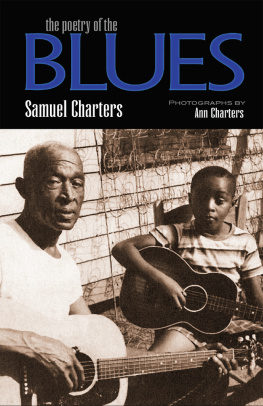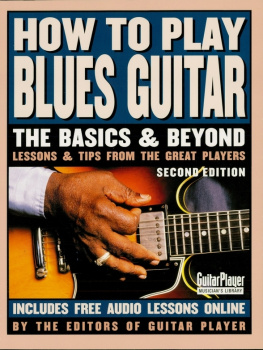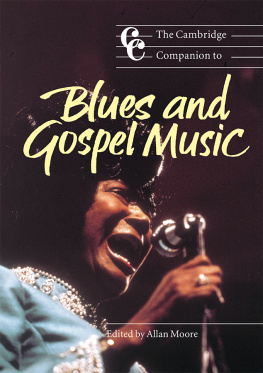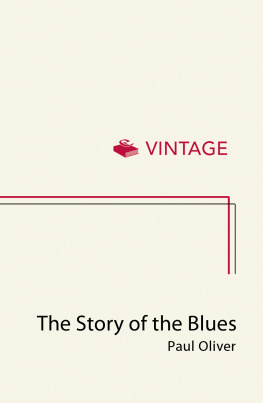
MARTIN SCORSESE PRESENTS
THE
BLUES
a musical journey
Edited by
Peter Guralnick
Robert Santelli
Holly George-Warren
Christopher John Farley
Preface by Martin Scorsese
Foreword by Alex Gibney
Afterword by Chuck D

Contents
Ill never forget the first time I heard Lead Belly singing See See Rider. I was entranced. Like most people of my generation, I grew up listening to rock & roll. All of a sudden, in an instant, I could hear where it had all come from. And I could feel that the spirit behind the music, behind that voice and that guitar, came from somewhere much, much farther back in time.
Many people I know had the same shock of recognition. Rock & roll seemed to just come to us, on the radio and in the record stores. It became our music, a very important way of defining ourselves and separating from our parents. But then we uncovered another, deeper level, the history behind rock and R&B, the music behind our music. All roads led to the source, which was the blues.
We all like to imagine that art can come from out of nowhere and shock us like nothing weve ever seen or read or heard before. The greater truth is that everythingevery painting, every movie, every play, every songcomes out of something that precedes it. Its a chain of human responses. The beauty of art and the power of art is that it can never be standardized or mechanized. It has to be a human exchange, passed down hand to hand, or else its not art. Its endlessly old and endlessly new at the same time, because there are always young artists hearing and seeing work thats come before them, getting inspired and making something of their own out of what theyve absorbed.
When you listen to Skip James singing Devil Got My Woman or Son House singing Death Letter Blues or John Lee Hooker laying down one of his snaking guitar figures, when you really listenand believe me, its not hard, because this is music
that grabs your full attention from the first noteyoure hearing something very precious being passed down. A precious secret. Its there in all those echoes and borrowings, all those shared phrasings and guitar figures, all those songs that have passed down from singer to singer, player to player, sometimes changing along the way and becoming whole new songs in the process.
What is that secret? Recently, I was shooting a scene for the film I contributed to this series. I was in a studio with Corey Harris and Keb Mo, two extraordinary young musicians, and we were talking about Robert Johnson. Corey made a very important point: Throughout the history of African-American music, right up through the present, theres a distinction between the emotions of the singer and the words he or she is singing. The words of Hellhound on My Trail may be about a jealous woman sprinkling hot foot powder around her lovers door, but Robert Johnson is singing something else, something mysterious, powerful, undefinable. The words dont contain the emotion, theyre a vehicle for it. Corey called this a language of exclusion, which can be found in the poetry of Langston Hughes just as easily as it can be found in the music of Howlin Wolf or Lightnin Hopkins. It was and still is a way of maintaining dignity and identity, both individual and collective, through art; and as we all know (or should know), it originated as a response to the very worst forms of oppression: slavery, sharecropping, and the racism thats never left American society. The precious secret is simply that part of the human soul which can never be trampled on or taken away. Its brought more to our culture than any of us ever could have imagined. Its tragic that racism continues to thrive in the western world, but its also utterly ridiculous, because theres no one who hasnt profited from the spirit that animates this music. Without it, this culture of ours, so rich and varied, would be nothing.
A few years ago, we initiated this projectthese films and this book of essays to accompany themas a celebration of a great American art form. It became many other things along the way a series of inquiries, tracing the different emotional and geographical paths the music took; a memorial to many great artists who have sadly passed away; a reflection on time and on the many ways the past can both haunt and enrich the present; and for all of us, for Wim Wenders, Charles Burnett, Richard Pearce, Marc Levin, Mike Figgis, Clint Eastwood, and myself, something deeply personal. For my own part, it became a reflection on an essential part of my creative process.
Music has played a key role in my life and my work. When Im preparing a movie, its only when I hear the music in my head that the movie comes together for me, when I really start to see it. I could picture Gangs of New Yorks opening scene only after I first heard Otha Turners hypnotic music. Even when the music doesnt make it into the finished product, its there behind everything I do. When I look at the wonderful films made by the other directors who took part in this series, I know that its the same for them. And the blues has always held a special place for me. Its the most physical music I know, with an emotional undertow thats unlike absolutely anything else. When you listen to the otherworldly voice of Robert Johnson hitting those words blues fallin down like hail, or Howlin Wolf riding the rhythm of Spoonful with such amazing
ease and more than living up to his name at the same time, or Skip James lamenting love, the worst of all human afflictions, in Devil Got My Woman, or Son House hugging the memory of his dead lover for dear life in the tightly coiled Death Letter Blues, youre hearing something from way, way back, something eternal, elemental, something that defies rational thought, just like all the greatest art. You have to let it grab hold of you. You have no choice. When I made The Last Waltz, I had the privilege of filming Muddy Waters, and I still get an electric thrill just thinking about his amazing rendition of Mannish Boy, the pleasure he took in every word, every phrase, the authority he commanded. How many times had he sung that song before that night? And there he was, singing it again, like it was the first time, or the last. I realized that the blues could do that for you, and for us. It gets at the essential.
I hope you enjoy watching these films as much as we all enjoyed making them. And when you read these beautiful essays by all these terrific artists, historians, and writers, youll feel the passion that this music can arouse. We turned to some of the best writers we could think ofElmore Leonard, Studs Terkel, David Halberstam, the great biographer and critic Chris Farley, and the wonderful historian Peter Guralnick, among themand they all came through out of sheer love for the music.
Most of all, we want you to listen to the music. If you already know the blues, then maybe this will give you a reason to go back to it. And if youve never heard the blues, and youre coming across it for the first time, I can promise you this: Your life is about to change for the better.
Aint but one kind of blues and that consists of a male and female thats in love Son House
Its hard to explain, describe, or write about the blues. Like listening to the sound of sex through a thin motel wall, you know the blues when you hear it, even if you would be hard-pressed to describe
Next page

